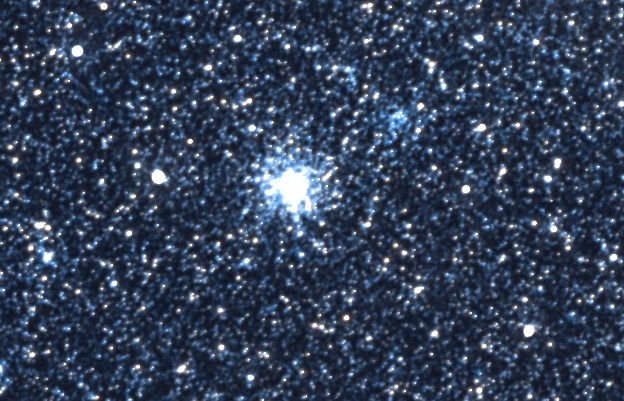NGC 1852 is an open star cluster located in the southern constellation of Dorado, which lies within the Large Magellanic Cloud (LMC), a satellite galaxy of the Milky Way. The cluster was discovered by British astronomer John Herschel on November 30, 1836, during his observations from the Cape of Good Hope in South Africa.
Physical Characteristics
This relatively young open star cluster is estimated to be around 200 million years old and is composed of numerous young, hot, blue stars that formed together from the same molecular cloud. These stars remain relatively close together compared to other open clusters, indicating their recent formation in astronomical terms. The gravitational attraction among the stars helps to keep them bound to one another, although the binding is weak compared to the stronger forces present in globular clusters. Over time, interactions with other stars and cosmic structures can disrupt this gravitational cohesion, leading to a gradual dispersion of the cluster.
NGC 1852 has a compact structure, with its stars concentrated within a small region of the sky, and it has an apparent diameter of about 3 arcminutes. Its apparent magnitude is approximately 11.2, making it visible with moderate-sized amateur telescopes under dark skies. However, to resolve individual stars within the cluster, a larger telescope with moderate to high magnification is recommended.
Observation
The best time to observe NGC 1852 from the Southern Hemisphere is during the austral summer months, roughly from October to March. During this period, the constellation Dorado is higher in the sky, making the cluster more accessible for observation. While it may still be visible during other months depending on local conditions, these summer months provide the optimal viewing opportunities. In large binoculars, NGC 1852 appears as a faint, fuzzy patch of light, while telescopes reveal its individual stars, showcasing the cluster’s true beauty. NGC 1852 is generally too faint to be seen with standard 10×50 binoculars.




